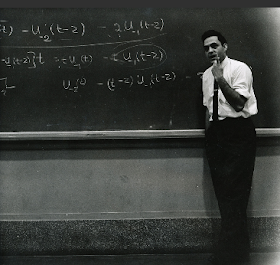Cell is a
structural and functional unit of life,
structural and functional unit of life,
that we all know from our high school classes..
Cell specializing in to
tissue, tissue system, organ, organ system;
tissue, tissue system, organ, organ system;
that is the pattern we find in
simple to complex evolutionary pattern in all life forms.
simple to complex evolutionary pattern in all life forms.
Amoeba always reminds us
the hidden potentiality of a cell..
ultimate cooperation of multicellularity.
the hidden potentiality of a cell..
where many functions like growth and reproduction been discarded
for the sake of ultimate cooperation of multicellularity.
When a cell in our body rebels to cooperate,
go on dividing and growing by itself,
defying natural process of cell death called apoptosis,
that becomes cancerous..
Cell is still a mystery..
As and when it behaves of it's own,
as selfishly competing organism in itself,
for the reasons unknown..!!
Cell as we all know about:
Cell is a structural and functional unit of life, that's what our study revealed.
Basic structures were the same as for the animal cell ..
Basic structures were the same as for the plant cell too..
Similar work lead similar specialization of cells
and that lead to formation of Tissue and Tissue System.
Further advancement lead to Organ and Organ System formation
in most evolved animals and plants of today..
and that lead to formation of Tissue and Tissue System.
Further advancement lead to Organ and Organ System formation
in most evolved animals and plants of today..
Today we have a world of lives,
where..
1. Amoeba, which is a single cell organism, acellular better suits a name..
2. Plants evolved at Organ System level, but cell physiology is still the same at the cellular level..
where..
2. Animals evolved at Organ System level, but cell physiology is still the same at the cellular level..
Cell as it still remains to be known:
Cancer cells have amazed us by behaving as an organism defying death:
Cancer is ultimately the result of cells that uncontrollably grow and do
not die.
Normal cells in the body follow an orderly path of growth,
division, and death.
Programmed cell death is
called apoptosis, and when this process breaks down, cancer begins to
form. Unlike regular cells, cancer cells do not experience programmatic
death and instead continue to grow and
divide. This leads to a mass of abnormal cells that grows out of
control.
Reality of multicellularity (One Cell in Multicellular Organization): “Multicellularity is the ultimate in cooperation,” said Travisano, who wants to understand how cooperation emerges in selfishly competing organisms. “Multiple cells make up an individual that cooperates for the benefit of the whole. Sometimes cells give up their ability to reproduce for the benefit of close kin.”
The Paramount Factor: The new study suggests that environmental conditions are paramount: Give single-celled organisms reason to go multicellular, and they will.
(evolutionary biologist Michael Travisano of the University of Minnesota, co-author of a study Jan. 17 in the Proceedings of the National Academy of Sciences.)
Study of viruses may reveal the molecular evolutionary history of cell and tendencies hidden: It has been suggested that DNA and DNA replication machineries first originated in the viral world (Forterre 1999; Villarreal and DeFilippis 2000; Forterre 2002), that virus-induced transition of cells with RNA genomes into cells with DNA genomes triggered the emergence of the three cellular domains (Forterre 2006), that the nucleus of eukaryotic cells originated from a large DNA virus (Takemura 2001; Bell 2001), or even that the selection pressure to prevent the entry of virions promoted the evolution of cell walls (Jalasvuori and Bamford 2008). All these hypotheses are not easily testable, but recent findings make them reasonable. Indeed, it has been shown that cellular proteins playing very important roles in modern organisms may have a viral origin. For instance, phylogenetic analyses have revealed that the RNA polymerase, DNA polymerase and DNA helicase that transcribe and replicate DNA in modern mitochondria were recruited from a virus that was originally integrated into the genome of the bacterium at the origin of the mitochondria (Filée and Forterre 2005). More recently, it has been shown that placentation in mammals is initiated by a protein, syncitin, encoded by a retrovirus integrated in mammalian chromosomes (De Parseval and Heidmann 2005; Prudhomme et al. 2005). There are many other examples of the role that viruses have played in recent cellular evolution (for reviews, see Ryan 2007; Brosius 2003; Villarreal 2005). Brosius wrote, for instance, that “the interaction of hosts with retroviruses, retrotransposons and retroelements is one of the eternal conflicts that drive the evolution of life” (Brosius 2003). Prangishvili and myself have recently extended his argument, concluding that the conflict between cells and viruses has been (and still is) the major engine of life evolution (Forterre and Prangishvili 2009).
Latest findings in viral studies compels to coin new definition of life and organism:
Life: Mode of existence of ribosomes encoding organisms (cells) and capsid encoding organisms (viruses) and their ancestors.(shared from:Defining life: The virus viewpoint by Patrick Forterre in NCBI article: Published online 2010 March 3)
#some related blogpost links:
cancer cases in india
cellular chemistry of cancer cell
unruly behaviour of cell
viruses are cellular organism
vedic poetry of creation
cell multicellularity in new perspective
biological classification
origin of life in metaphysical perspective
mitochondria is a prokaryotic cyanobean symbiont









No comments:
Post a Comment